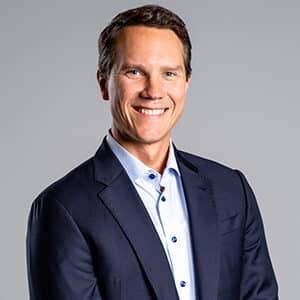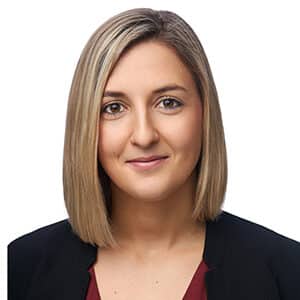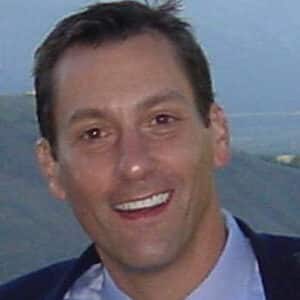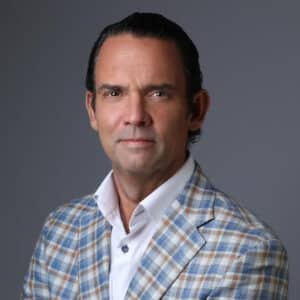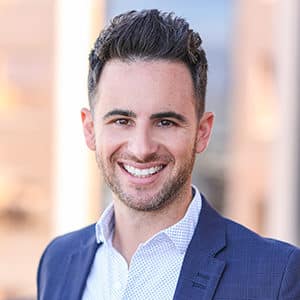
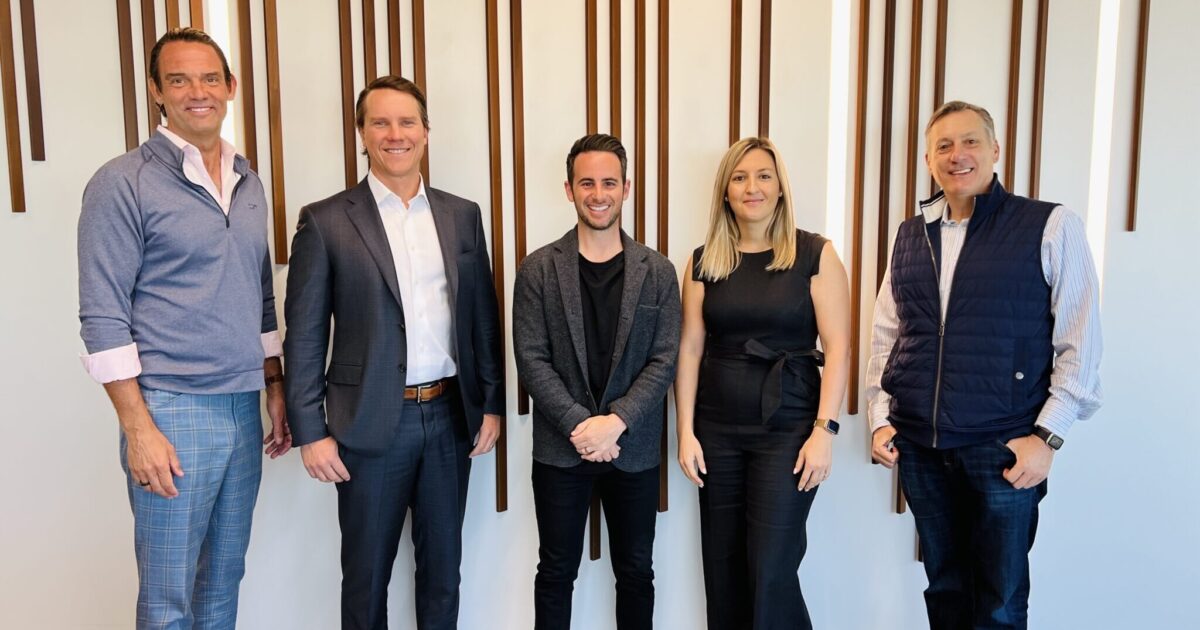
Ambassador Event: Funds for the Future
Published: 03/31/2023
Updated: 04/03/2023
Greater Phoenix startups have increasing access to venture funding
With a diverse industry base and variety of new funds committed to supporting local entrepreneurs, Greater Phoenix has emerged as one of the top alternatives for the growing number of startups leaving traditional hubs like Silicon Valley and New York. The region broke its venture capital funding record in 2021 and recorded more than $3 billion in funding from 2021-22.
Greater Phoenix capital leaders joined a GPEC Ambassador Event to discuss the startup industry and funding opportunities. The panel included:
- Kyle Brown, President and Chief Investment Officer, Trinity Capital
- Janelle Goulard, Partner, Pangaea Ventures
- Ken Sawyer, Founder and Managing Partner, Saints Capital
- Jack Selby, Founder and Managing Partner, AZ-VC
- Moderator: Mark Paratore, Vice President, Business Development, Greater Phoenix Economic Council
“Wall Street is now anywhere that you have access to the internet,” Brown said. “[Money managers] don’t need you to be in person for every meeting. Access to a fund in Arizona — we now have access to money all over the world.”
Diversification of the Greater Phoenix startup industry
Trends in Arizona startup funding has mirrored national markets; early seed and angel rounds remain resilient, but startups seeking middle and later-stage funding have hit roadblocks. Valuations throughout the nation are resetting.
Arizona set a record in 2021 for total venture capital funding with $2.13 billion brought in through 184 deals. It followed that up with $1.21 billion across 160 deals in 2022, aligning with a national decrease in startup funding year-over-year.
A diversified industry base has aided Greater Phoenix’s growth. Where it previously relied on call centers and real estate, the region’s economy is now backed by advanced and emerging industry like semiconductor, climate technology, software, biosciences and cybersecurity.
Venture capital funds have developed alongside this growing market. AZ-VC, founded by former PayPal exec and longtime managing director of Thiel Capital, Jack Selby, has become Arizona’s largest venture capital fund positioned to support the technology hotbed emerging in Arizona. Anchored with a $25 million commitment from Pinnacle West Capital Corporation that targets proven, post revenue companies to help accelerate their growth with a typical check size of $2-5 million.
“The premise of this fund is essentially to fill that gap and hopefully keep our best and brightest companies funded here in Arizona, with the ultimate outcome being that when they have the liquidity back, push those chips back into the ecosystem so we can do it all over again and get that flywheel effect,” Selby said.
Pangaea Ventures focuses on startups using advanced materials, novel chemistries, and biology to build tech centering around United Nations Sustainable Development Goals (SDGs) including clean energy, responsible consumption and innovative infrastructure.
Saints Capital centers its operations on the direct secondary market, serving founders and early employees, general partners of venture capital and private equity funds, financial institutions with illiquid securities and limited partners of old venture capital funds.
Trinity Capital provides venture debt and equipment financing to high-growth, venture-backed growth-stage companies. Brown noted the diversification of Greater Phoenix’s market has allowed portfolio companies to expand locally.
“Jobs have changed from just real estate jobs to a pretty diverse business landscape,” Brown said. “The diversification of businesses that are here in Phoenix (and) jobs available … it’s opened it up to individuals that have capital to different investment opportunities.”
Developing the talent base
With a business-friendly operating environment coupled with support from the local community, programs to accelerate innovation, and alignment with the higher education system, Greater Phoenix is an attractive market for entrepreneurs and investors.
Sawyer said as businesses got comfortable having sales teams around the country, they became more comfortable with engineers working remotely. Companies hiring high-performing workers outside the area in which they operate benefits regions like Greater Phoenix, close in proximity to San Francisco and Los Angeles and with much lower costs of living. If employees are concentrated in an area, businesses will follow — people no longer have to follow businesses.
“I got to think about recruiting that individual, that great engineer, those people that make cities walkable, make things affordable, make taxes easy, have good government. Those types of dynamics really impact where young people are going to move,” Sawyer said. “(Greater) Phoenix is really that bright … (it’s) trying to make this an ecosystem for young people to get connected into, move and live comfortably.”
Migration is just one aspect to growing tech talent in the region. Another pipeline is centered around the Ira A. Fulton School of Engineering at Arizona State University, with a nation-leading enrollment of 30,000 students, and the 10 schools in the Maricopa County Community College District that work with industry leaders to craft curriculum.
There is still room for improvement. Sawyer emphasized that hiring systems centered around candidates who fit a specific profile or attend a specific university limit the range of ideas that flow into a company, and that diversity of profile can increase diversity of thought. Goulard said that showing college students entrepreneurship and venture capital is a viable career path will increase the labor pool.
In creating this broad community, venture capitalist funds hope to foster a new generation of innovators. Pangaea, headquartered in Vancouver, experienced this growth over 20 years as the Canadian city evolved into a startup hub.
“It’s important that we lean into the community that we’re a part of and hope to build talent and invest in companies here,” Goulard said. “Thirty percent of the deals you do are in your local market, just naturally.”
Uniting startups and venture capital
Every market attempting to grow its startup ecosystem faces the age-old debate: Which comes first, startups or venture capital?
Greater Phoenix has both, but these two facets of growth need to coordinate their vision before they unite. AZ-VC made four investments in Arizona and has two more on the horizon, but Selby said the fund continues to look for startups that match their requirements for further funding.
“I want nothing more than to spend every single penny in the state of Arizona, but my fiduciary responsibility is to make money,” Selby said. “One of the challenges I will give this room is that we need to come together as a community and make sure that folks in this ecosystem know that we actually now have capital. It’s always been argued that there’s this chicken and egg component. The ecosystem would be flourishing if we had capital — we have capital. Now we need to go find those deals.”
Goulard echoed the sentiment, saying that funds need to see sophisticated startups and industry experience before they are willing to invest.
With the popularization of remote work and increased access to funding from different regions, there is no longer one correct way to create a startup ecosystem. Greater Phoenix will continue developing its industry by taking advantage of areas in which it is already successful.
“The misnomer here is that you have to be able to do it like Silicon Valley. You don’t. There’s a lot of ways to scale companies and there’s a lot of different opportunities that usually involve partnerships,” said Goulard.
“You don’t have to do it on your own. … That’s what I found so welcoming here is everyone’s opening their doors and saying how can I help. I think startups need to take advantage of that more because there’s no ego in this community. There’s ego in other communities, and we should leverage that.”
Meet the Panel
Kyle Brown
President and Chief Investment Officer
Trinity Capital
Janelle Goulard
Partner
Pangaea Ventures
Ken Sawyer
Founder and Managing Partner
Saints Capital
Jack Selby
Founder and Managing Partner
AZ-VC
Mark Paratore (Moderator)
Vice President, Business Development
Greater Phoenix Economic Council
